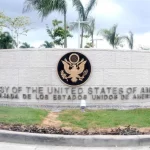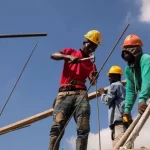Social emergency! A country pressured by the structural causes of crime and violence

Santo Domingo.- Without effective police and judicial management in the short term against acts that affect coexistence and the lives and property of the members of this society, the perception of insecurity will continue to occupy an essential place in the concerns of the national community regardless of fluctuating and cold statistics that only indicate that the creation of a satisfactory climate of guarantees will take time at the pace at which it is being worked on.
As the axe comes and goes, the liabilities of incompetence in the very realm of the defenders of the law and the proliferation within the community of individuals incapable of handling frustrations that cause violence to erupt from different corners will continue to gravitate. Fighting, for example, the rampages of murderers who have filled the country with female graves is not even well defined in the official agendas.
There is an urgency to inspire confidence in what is achieved with projects to massively reeducate civilians in values and train authorities at different levels to be effective in the face of crime and aggressiveness as a culture. The Government’s diagnosis of the police force’s dysfunctionalities was beyond any conservative calculation. It publicly pointed at a past that was too close and deep.
To this effect, a brand new police advisor, who was the immediate target of the onslaught of former hierarchs of the police force, described the institution as substantially affected by “internal, institutional and systematic corruption, directed from the General Directorate itself, down to the last rank and file.” It was expected that the consultant José Vila del Castillo would be crucified in the media after placing, over there in the Conchinchina, any objective of remediation that could not be immediate.
Although in the Dominican Republic, the high homicide rate is attributed in more significant proportion to violent behavior without apparent criminal intent, if the Dominican State does not generalize punitive actions in line with aggression to public order and citizens’ rights, the dissuasive-preventive effect of the law is dangerously weakened.
To argue from official offices that the lethal use of firearms “for personal reasons” escapes the protective competence of the Police and Justice is legally unsustainable and disregards the notion that the State must, at all times and in all situations, monopolize the exercise of force. And therefore, it is inexcusable that the illegal proliferation of firearms in the population, knowing scientifically that possessing these instruments of death increases the risk of unintentional shootings, suicides, and homicides.
4% of the population!
The Government’s inability to eliminate structural failures, which manifests itself through constitutional periods, is revealed by the ten years in which Dominican Education has been subjected to a coarse and privileged budgetary treatment that has not brought the public education system out of its failures in betrayal of the principle that “the better the education, the less the delinquency.”
The close link between school education and criminal or violent behavior is attested by a study years ago sponsored by the Inter-American Development Bank, IDB, which highlighted that education increases opportunities to access legal jobs and increases salaries, which reduces the financial attractiveness of criminal activities.
It states: “Increased education reduces the crime rate. An extra year of high school attendance significantly reduces the probability of arrest and incarceration”. The study applied in Latin American settings with common traits perceptible in the Dominican Republic led to the conclusion that a 1% increase in high school graduation generates millions of dollars in savings in public spending aimed at controlling crime. Teaching weakens it.
From the Mexican border with the United States to the southernmost tip of Patagonia, prisons are dominated by young people who have not completed the basic cycle of education: 82% in Brazil; 62% in Jamaica; 60% in Uruguay; in addition to the frequent presence in cells of individuals from incomplete or very low-quality education programs. They leave the classrooms without the level of education that allows them to live decently, with the option of making money at any price.
It must be recognized, however, that white-collar crime has a high social cost on the continent, even though its practitioners are a minority who often escape prosecution and therefore have a lower presence in the penitentiary system. High-level and elitist misdeeds that, as expressed in a report following a study outside the IDB, “conspire against any branch of the economy and investments in national sectors thus hindering development and destroying wealth and human resources.” Impunity merits heroic horse remedies by the four corners of the continental region in which we live.
Who is to blame?

Tahira Vargas (External source)
Focusing her analytical attention on the problem of violence in communities, anthropologist Tahira Vargas exposed the need to “adopt effective public policies that impact society as a whole. This must be intervened because this can become a time bomb regarding governance and security.”
In more recent statements, Vargas confronts those who describe the propensity to social violence as a consequence of the lack of learning values in the family, ignoring that there is a whole behavioral model that is imposed beyond the home and that influences adolescents and young people in the search for “easy money.”
The specialist deplores the preaching of opinion makers who focus on families for the proliferation of violent behavior based on neighborhood “micro-crime” while ignoring the significant damage caused by “macro-crime.” Vargas insisted that “the family-crime nexus is based on a conservative vision of society that ignores the reality of families, their composition and diversity as well as their social fabric that transcends the walls of the home.”
Perception or reality?
Believing that the world “is coming to an end” based on the facts that attract the most attention could be “objectively unjustifiable or simply disconnected from reality.” This is a statement by psychologist Jim Taylor Ph.D., an internationally recognized authority for his professionalism, which should be taken into account given the eloquent measurements that indicate that for most Dominicans (51.7% at some point recently and sometimes more), insecurity is the most significant concern.
The Government maintains (and lately more than before) that after the challenge to public order that resulted from the pandemic, the Dominican Republic has been the fifth country in the region with the lowest levels of homicides, calculated less than a year ago at a rate of 11.1 per 100,000 inhabitants, below the regional average of 20.4 homicides per 100,000 people.
And as on other occasions, the local authorities downplayed the importance of the many and sudden bloody events that included placing the Dominican Republic among the territories with more femicides in the area, pointing out that “most of the violent events are due to problems of coexistence,” without admitting the participation by omission at least of the State in the boom due to the predominant lack of severe criminal consequences that is revealed in a high rate of recidivism fed by aggressors who return promptly to freedom from prisons.
Less than a third of Dominican femicides (27.8%) escape prosecution by suicide. In San Pedro de Macoris, shamefully, at least three women were killed in a year by men released from prison moments before committing the crimes. The immobilization in police cells, ordered by a judge duly informed of the violent background and the murderous intentions of these preventive prisoners, lasted less than a cockroach in a henhouse.

















